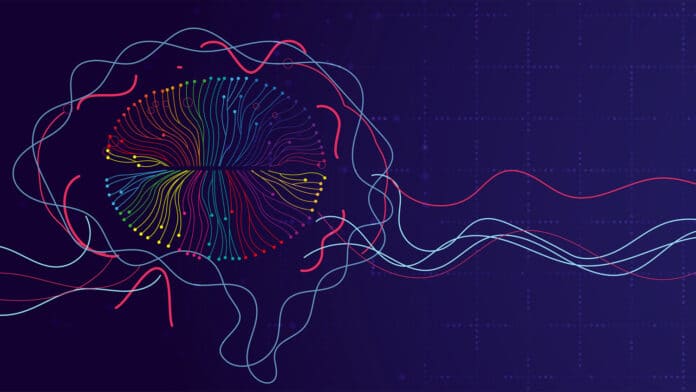The brain activity of patients under anesthesia slows down as they undergo unconsciousness. Burst suppression, a deeper level of unconsciousness brought on by higher anesthetic doses, is linked to cognitive deficits after the patient awakens.
In a recent study, MIT scientists analyzed the EEG patterns of patients under anesthesia. They identified brain wave signatures that could aid anesthesiologists in identifying when patients are in that deeper stage of unconsciousness. This might help keep patients from slipping into that condition, lowering the possibility of postoperative brain impairment.
Brain wave signatures that could aid anesthesiologists in identifying when patients are in that deeper stage of unconsciousness have been identified in a recent MIT study that examined the EEG patterns of patients receiving anesthesia. This might help keep patients from slipping into that condition, lowering the possibility of postoperative brain impairment.
The brain‘s alpha waves showed one of these different patterns. These waves began to wax and wane in intensity as patients fell asleep. The pattern of this waxing and waning in amplitude, or amplitude modulation, continuously varied as patients fell deeper into unconsciousness.
Emery Brown, the Edward Hood Taplin Professor of Medical Engineering and Computational Neuroscience, said, “If you track this modulation as it gets deeper or shallower, you have a very principled way to track the level of unconsciousness under anesthesia.”
Brain waves, which are produced by synchronized neuronal activity, oscillate at various frequencies depending on the task the brain is working on. Higher-frequency beta (15–30 hertz) and gamma (more than 30 hertz) oscillations are produced by the brain when it is actively thinking, and these oscillations are thought to assist in organizing information and improve communication across various brain regions.
Propofol and other commonly used anesthetics have a considerable impact on these oscillations. The brain reaches a state of unconsciousness known as slow-delta-alpha (SDA) during anesthesia caused by propofol or other anesthetics that boost the efficiency of GABAergic inhibitory receptors in the brain. Slow (0.1–1 hertz), delta–4 hertz, and alpha–8–14 hertz oscillations define this condition.
Higher doses of these anesthetic medications can potentially cause the brain to enter a deeper state of unconsciousness. The brain exhibits prolonged periods of inactivity, interspersed with brief bursts of low-amplitude oscillations when in this burst suppression state. Patients who reach this stage are more prone to suffer from memory loss, delirium, and postoperative confusion. Elderly people are more likely to experience these symptoms, which might continue for hours, days, weeks, or months.
The unique EEG patterns produced by SDA and burst suppression have been extensively investigated. It is less apparent what transpires when the two states change from one to the other because they have only ever been investigated as distinct brain states. The MIT team’s goal in this investigation was to examine that transition.
To do that, the researchers looked at 30 surgical patients and 10 healthy volunteers. Most patients received sevoflurane, a standard anesthetic gas; the remainder received intravenous propofol. Both of these medications diminish the excitability of neurons by acting on GABA receptors in the brain.
Patients showed two patterns of change in their EEGs as propofol dosage was raised. The alpha waves, which began to wax and wane, revealed the first pattern. The waxing was shortened until the patient reached the state of burst suppression, and waning was delayed as the dose was raised.
Brown says, “You can see a strong modulation, which is always there. As the modulation becomes more profound, it eventually flattens out, and that’s when the brain reaches the deeper state.”
The amplitude of the alpha waves increased once again when the medication dosage was decreased.
The slow and delta waves recorded in the patient’s EEG readings revealed a particular pattern to the researchers. The slowest brain waves are called slow and delta oscillations, and as drug dosage was raised, these waves’ frequency decreased, signaling a decline in brain activity.
According to the researchers, propofol causes these effects by altering the metabolism of neurons. The drug is thought to prevent the synthesis of ATP, which cells use to store energy. Burst suppression results from neurons losing their ability to fire when ATP synthesis decreases.
Brown said, “This is consistent with the observation that burst suppression is very frequent in older patients because their metabolic state may be less well-regulated than that of younger patients.”
“The findings could offer anesthesiologists more refined control over a patient’s unconsciousness during surgery.”
“Anesthesiologists could also learn to make that determination by looking for these patterns in a patient’s EEG.”
“One of the reasons we’re excited about this is that it’s something you can see in the raw EEG. Now that we have pointed out these patterns, they’re very easy to see.”
The study appear this week in the Proceedings of the National Academy of Sciences.
